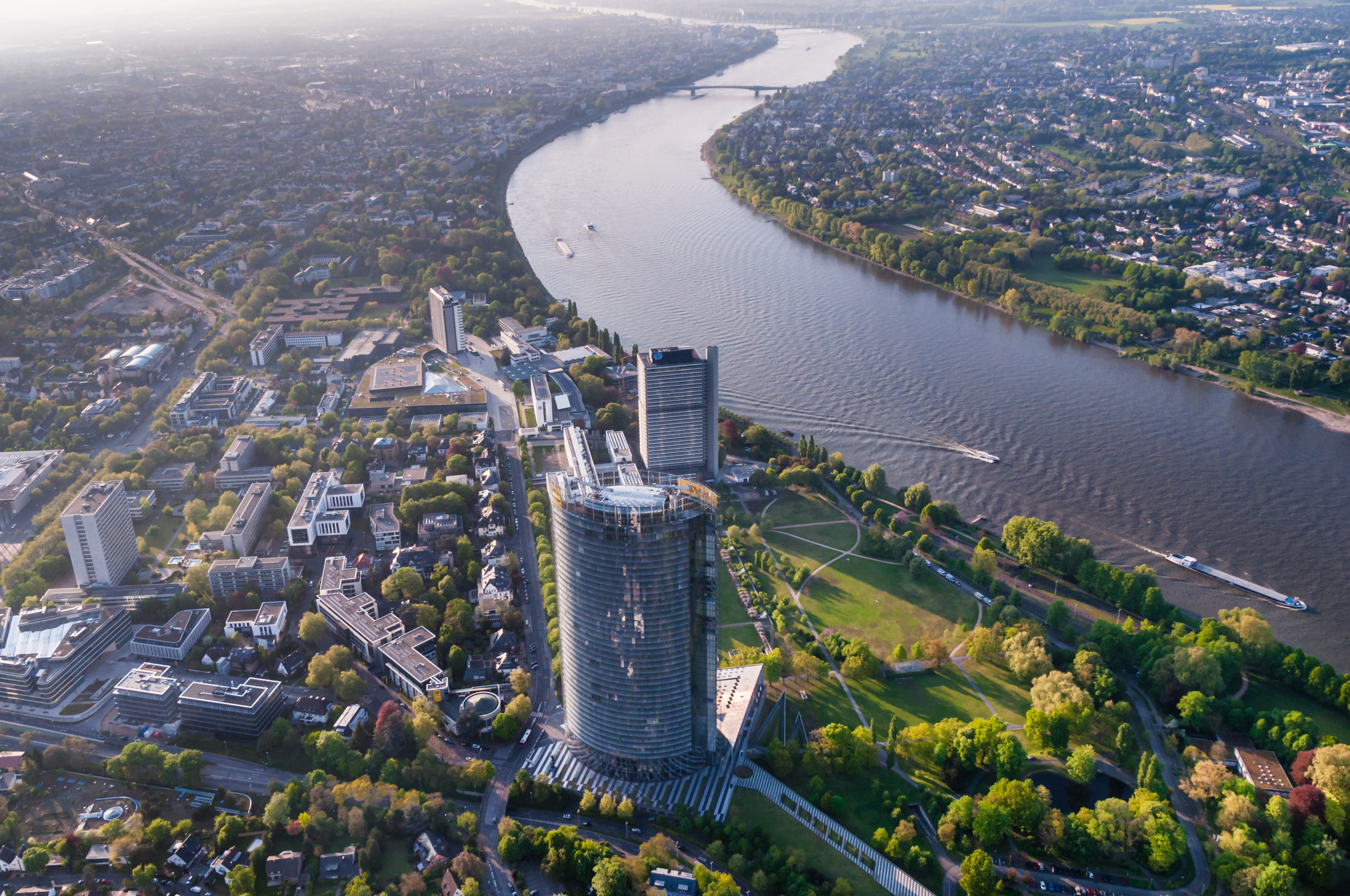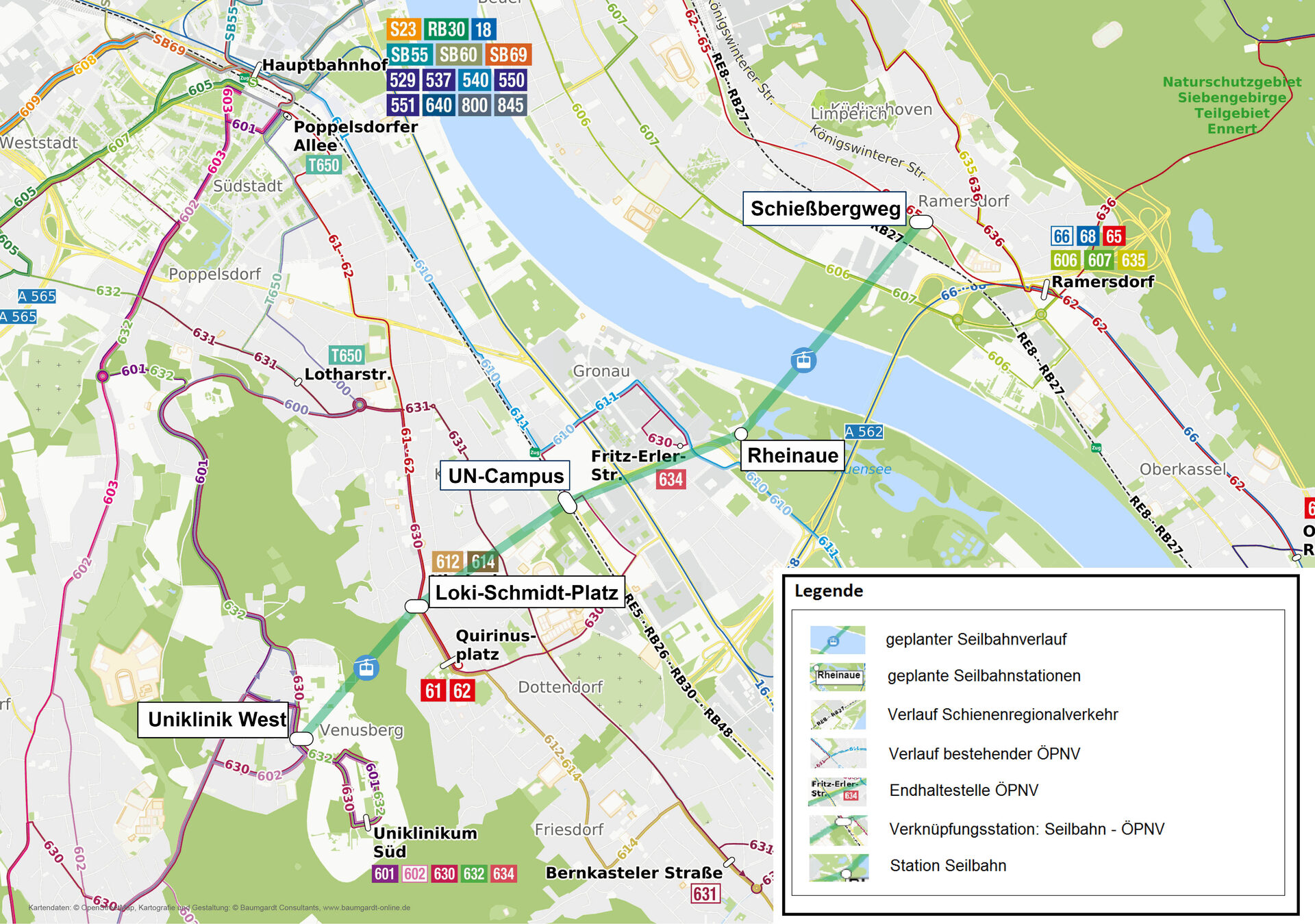
Cities, SI Urban 2/2022, Tourism
Bonn – key steps for Venusberg
Venusberg is a popular excursion peak in Bonn. In addition, UKB university hospital is also located on the mountain. Students, staff, patients and visitors therefore commute to the peak en masse every day.
However, this represents a test of endurance for the only access road, and parking spaces are also in short supply. Because of these ever- increasing numbers, the city of Bonn was looking for an effective solution approach.
The local conditions meant that the urban cable car in particular was able to prove its worth. However, such a project is practical only if it is integrated into the existing public transport network.
By decision of the council on 9th December 2021, the federal city of Bonn therefore adopted the planned cable car as part of the still valid local public transport requirement plan and the local public transport infrastructure financing plan of the state of North Rhine-Westphalia. It will therefore be possible subsequently to apply for funding for the project.
But it is not only Venusberg that will benefit from the improved connectivity. Every day, the area south of the centre of Bonn is a port of call for many students and commuters, but the planned route would create an important cross- connection from Venusberg via Loki- Schmidt-Platz, the university campus stop and the other side of the Rhine.
Residents have a say
The planning stages for Bonn’s cable car are increasingly being refined, but the standardised assessment has only just been conducted. In- depth planning will take place only in the next steps.
At this stage, the voices of residents will then also carry more weight, as the transport system should also benefit from the expertise of the population; nobody knows better what an urban cable car needs to achieve than those who will eventually also be able to use it every day.

Cost-benefit calculation
The planned urban single-cable circulating track is a system with a 4.3-kilometre route, 95 gondolas andfivestations,whichwilloperate in two sections. The costs for this project have been calculated at 66 million euros.
As is usual for such projects, a 30-percent cost surcharge has also been included, owing to the long planning and approval time. The total costs of 66 million euros include: cableway technology, underground engineering and building construction with foundations, access infrastructure and cable car buildings as well as planning costs.
These also include the costs of the gondolas, garages and control rooms. The majority of the investments can be funded through the German municipal transport financing act (GVFG). A contribution of approximately eleven million euros would remain for the city of Bonn.
The present situation includes not only the precise cost breakdowns but also assessments of the project benefit that would result from the construction of such a system. Two questions were therefore considered in detail in this study.
First: Whether the project is economically advantageous and the benefit therefore outweighs the costs. Second: Careful consideration was given to the secondary costs. Cable cars have a service life of approx. 30 years, which is why this period has also been used in the standardised assessment for calculation of the annual costs.
The calculation of secondary costs showed that expenditure of around 800,000 euros is expected in the short term. In the long term, owing to maintenance and repair costs, this would increase to around 2.1 million euros.
On the basis of these calculations and an assessment of the cost-benefit ratio at 1.6 (NB: a value of at least 1 is needed, in order to meet the funding requirement), the cable car project in Bonn is provisionally classified as economically viable and therefore eligible for funding.
Because the planning is currently at an early stage, the costs may yet change in the further planning process.
What happens next?
After the council decision, the responses of the regional council and the transport committee of North Rhine-Westphalia state parliament must now be awaited in respect of integration of the cable car into the local public transport requirement plan.
The next steps in the planning can be taken only once the cable car is given the green light here. After the assessments have been reviewed and the funding received, construction could begin.
At approx. 1.5 years, the construction time of a cable car is very short; the cable car could therefore open for operation in 2028, if everything goes smoothly.







